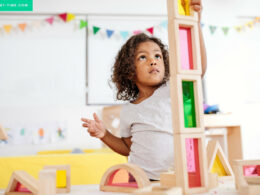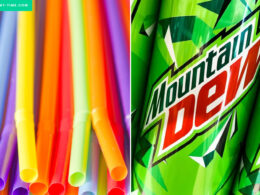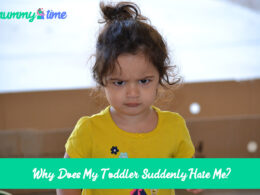In This Article Show
Welcome to the vibrant world of toddlerhood, where every day is a new adventure, and keeping those little legs and minds active becomes the highlight of our parenting journey.
As a mum of three, I’ve learned that engaging toddlers is not just about keeping them busy; it’s about nourishing their boundless curiosity and fostering a love for learning through play. I’m excited to share with you five creative activities that have kept my toddlers not only engaged and happy but also thriving.
Whether you’re a seasoned parent or just starting, these ideas are designed to be your go-to for days when you need a fresh dose of inspiration to keep your toddler engaged and, most importantly, very happy.
So, let’s get those little neurons firing and those adorable giggles echoing through our homes with some creative playtime!
5 Creative Activities to Keep Your Toddler Engaged and Happy
Engagement is the key when it comes to toddlers. Those early years are crucial for their development, and what better way to support their growth than with activities that ignite their senses, spark their imaginations, and get their tiny hands moving?
From sensory bins that enchant their touch to the simple joy of a homemade musical instrument, each activity is a stepping stone to learning.
Great deals to snatch for your little ones 🎉
Sensory Bins: Exploring Textures and Shapes
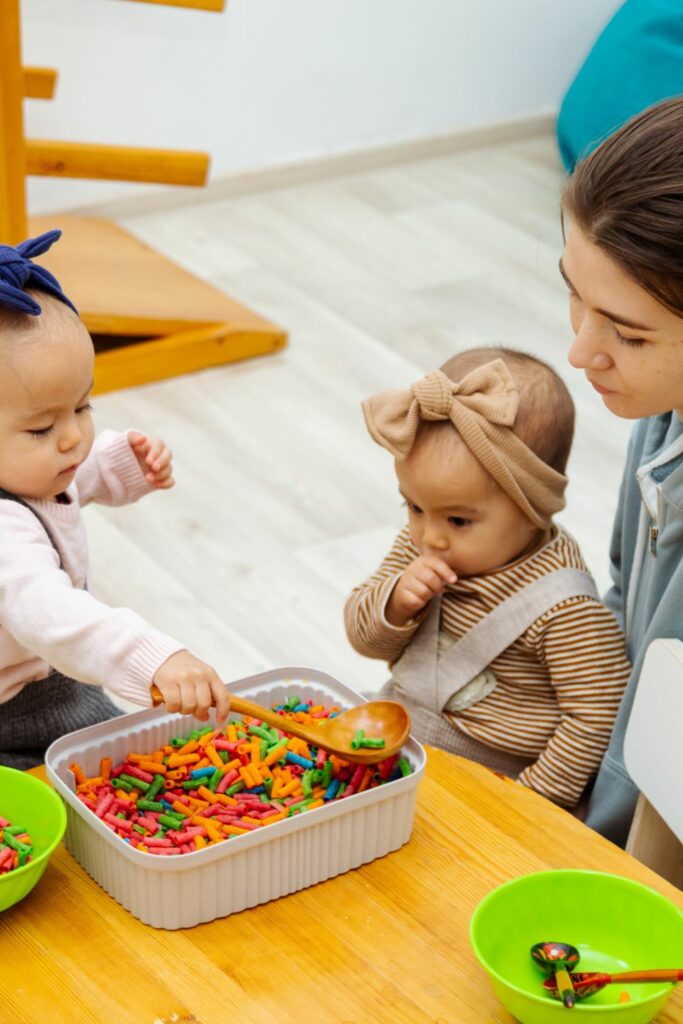
The concept of a sensory bin is beautifully simple: it’s a container filled with materials that stimulate the senses.
They are tactile havens for little hands, packed with different textures and shapes, allowing toddlers to scoop, pour, sort, and explore. This type of play is not just fun; it’s educational, too.
According to the American Academy of Pediatrics, sensory play contributes significantly to the cognitive and physical development of children. It builds nerve connections in the brain’s pathways, which lead to a child’s ability to complete more complex learning tasks.
Sensory bins also provide a natural way for children to discover and process the world around them.
Here’s a straightforward guide to creating your sensory bin at home:
- Select a Container: Any large, shallow container works – a plastic storage box is a common choice. Make sure it’s wide enough for your toddler to reach in without climbing in.
- Filler Material: Choose a base – rice, beans, sand, water beads, or even shredded paper. This is what your child will dig into.
- Objects and Tools: Add items of various sizes, shapes, and textures. Think pom-poms, scoops, plastic animals, or large beads. Make sure all items are safe for your toddler’s age to avoid choking hazards.
- Themes are Fun: Themed bins, like nature-inspired or holiday-specific, can provide a fresh twist and new learning opportunities.
- Supervision is Key: Always supervise your child during sensory play to ensure safety, especially with toddlers who might be inclined to taste their discoveries.
Engaging toddlers with sensory bins not only brightens their day but also sets the stage for a lifetime of learning through play.
DIY Craft Time: Unleashing Imagination with Everyday Items

Crafting isn’t just a way to pass the time; it’s a critical element in the developmental puzzle for toddlers. When little fingers fold paper, wield paintbrushes, or string beads, they’re not only crafting their next masterpiece; they’re also fine-tuning their motor skills.
The act of manipulating materials helps strengthen the small muscles in their hands and fingers, leading to better hand-eye coordination and precision in their movements.
Here are some simple crafting ideas that use everyday items, turning the recycle bin into a treasure trove of possibilities:
- Milk Jug Wind Socks: Clean out an old milk jug, cut the bottom off, and let your child decorate it with markers, stickers, or tissue paper. Add streamers or ribbons to the spout end, and hang it outside to dance in the wind.
- Sock Puppets: Take a lonely sock without a partner and give it a new life. Glue on yarn for hair, buttons for eyes, and fabric scraps for a mouth. Then, put on a puppet show!
- Bottle Cap Art: Save various bottle caps and use them to create art. Your toddler can sort them by size and color, and with your help, glue them onto a piece of paper or cardboard in fun patterns or shapes.
Once you have a few crafted items, it’s time to weave them into interactive storytelling. This is where imagination really kicks into high gear.
Each crafted item adds depth to the story, and when toddlers use their creations in play, they’re not only reinforcing their own ideas and creativity but also improving their language skills and understanding of narrative structure.
Musical Fun: Homemade Instruments and Dance Parties
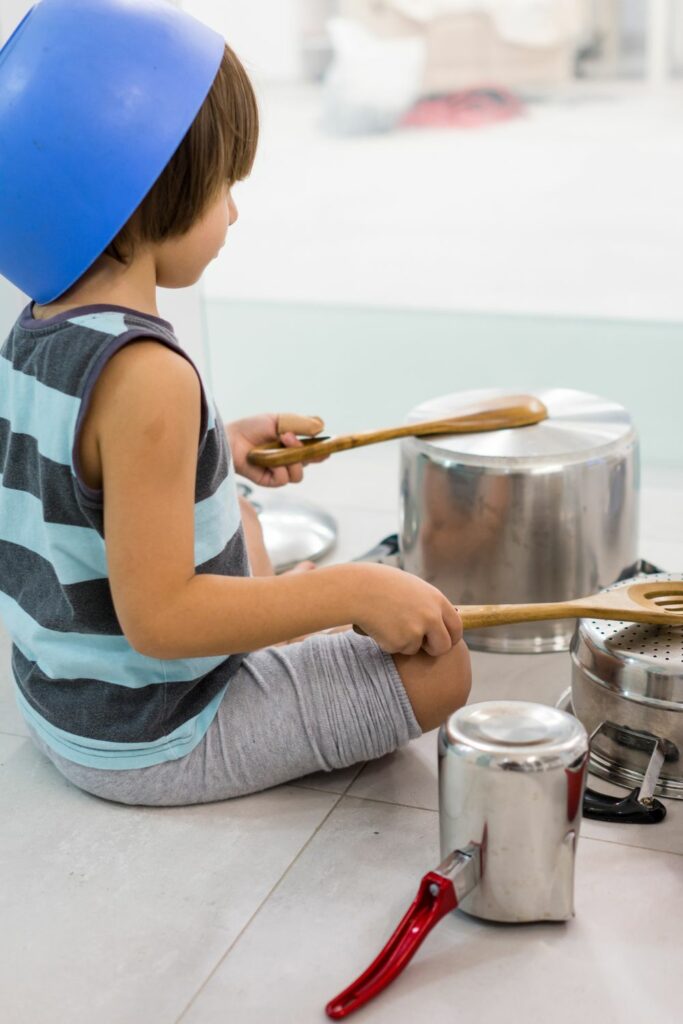
Music and rhythm are more than just enjoyable experiences for toddlers; they are vital elements that support cognitive development and learning. The relationship between musical engagement and the enhancement of brain functions like language, memory, and attention has been well documented.
Introducing music early on can foster a child’s ability to process sounds and words, which is essential for language development.
With simple instructions, you can transform household items into musical instruments, making the learning process not just educational but also immensely fun:
- Box Guitars: Stretch rubber bands around a tissue box (with a hole cut in the top) to create a guitar. Different band sizes will create different sounds.
- Bottle Shakers: Fill empty water bottles with rice, beans, or beads. Secure the lids tightly with tape, and you have instant shakers!
- Pot and Pan Drums: It’s a classic for a reason. Turn your kitchenware upside down, grab a wooden spoon, and bang away. Different sizes and materials will produce different sounds.
- Jingle Bell Bracelets: Thread some bells onto a pipe cleaner or a piece of elastic to make a jingle bracelet that makes music with every movement.
Once you’ve made a few instruments, it’s time to put them to use. Incorporating music and dance into your toddler’s daily routine can be both simple and spontaneous. Here are some ideas:
- Morning Wake-Up Rhythm: Start the day with a song. It’s a positive way to wake up and can signal that it’s time to get ready.
- Cleanup Parade: When it’s time to tidy up, have a “cleanup parade” with your instruments. March around picking up toys to the beat.
- Bath Time Concerts: Use bath-friendly instruments to make bath time an anticipated event.
- Dance Party Time: Designate a time each day for a dance party. Let your toddler choose an instrument to play while you both dance to some of your favorite tunes.
- Story time Melodies: Add musical cues to reading time. Create a simple tune or sound for characters or actions in the story.
Nature Walks and Outdoor Scavenger Hunts

Outdoor play is a critical component of a toddler’s development. The fresh air, the diverse landscapes, and the myriad opportunities for exploration are incredibly beneficial.
This isn’t just a chance for toddlers to burn off energy; it’s a platform for sensory stimulation and learning. Nature challenges children to think, question, and investigate, which is fundamental to their cognitive and emotional growth.
To turn a simple walk in the park into an exciting adventure, consider organizing a scavenger hunt tailored to your toddler’s age and interest:
- Color Hunt: Give your child a card with colors to find in nature, like green leaves, brown bark, or a blue sky.
- Shape Search: Look for items that match certain shapes, such as a round stone, a rectangular brick, or star-shaped leaves.
- Texture Quest: Find items with different textures: smooth pebbles, rough tree bark, soft grass, or sticky sap.
- Sound Safari: Listen for specific sounds: birds chirping, leaves rustling, water splashing, or dogs barking.
- Number Trail: Challenge your toddler to find a certain number of objects, like three sticks or four flowers.
Interactive Reading Sessions: Beyond the Pages of a Book
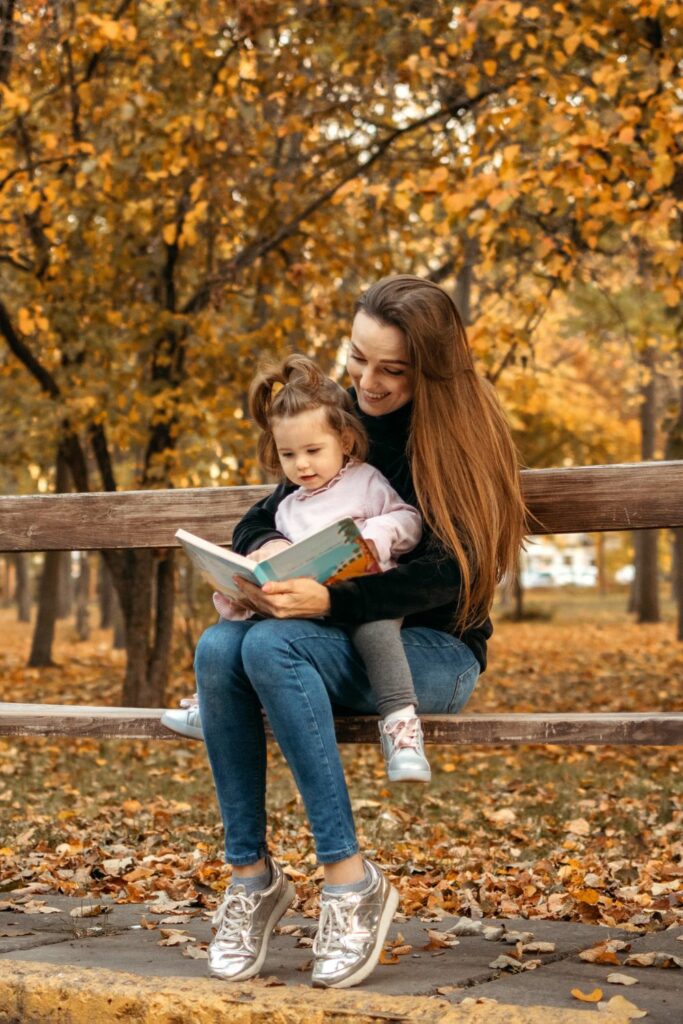
Interactive reading involves the child in the storytelling process, making them an active participant rather than a passive listener. This method has been shown to improve language skills, promote narrative understanding, and stimulate a child’s imagination.
When selecting age-appropriate books for interactive reading, consider the following:
- Vibrant Illustrations: Books with colorful and engaging pictures capture a toddler’s attention and provide opportunities for discussion.
- Repetitive Phrases: Stories with repetition allow children to anticipate and “read” along.
- Lift-the-Flap Features Books with flaps or different textures to touch keep little hands busy and engaged.
- Simple Plots: A straightforward story is easier for toddlers to follow and talk about.
- Interactive Components: Look for books that encourage actions like clapping, touching, or making sounds.
By transforming reading time into an interactive experience, you are not just reading a book; you are inviting your toddler into a multifaceted world where stories are alive, learning is exciting, and the characters become friends to play with long after the book is closed.
This interactive approach can set the stage for a child’s successful reading journey and build a foundation for academic skills that extend well into the future.











